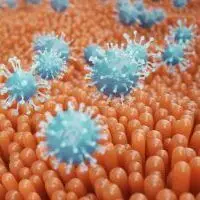Nutrient absorption – a modern day dilemma

Do you have an issue with Nutrient Absorption?
Nutritional deficiencies are a common problem in modern society. Unfortunately, before signs or symptoms of deficiency disease appear, the body develops a set of adaptive mechanisms and seeks to use the reserves until they are exhausted.
Many people develop signs or symptoms such as chronic fatigue, diarrhea, emotional disturbances, skin problems, menstrual cycle disturbances, etc., and do not give it much importance. However, these are often the first symptoms of a nutritional deficiency.
The lack of essential nutrients in our body has several causes
Depleted soils: One of the main factors contributing to nutritional deficiencies is the lack of nutrients in the soil. Soils are becoming increasingly impoverished, and plants cannot absorb the nutrients they need to grow and develop properly. This means that even fresh, healthy foods do not necessarily provide the nutrients the body needs.
Malabsorption syndrome: Another common cause of nutritional deficiencies is malabsorption syndrome. This occurs when the body cannot absorb nutrients from food due to a disease or medical condition. People with inflammatory bowel disease, pancreatic disease, or autoimmune disorders may have an increased risk of malabsorption syndrome.
Genetically modified foods: Consumption of genetically modified foods has increased in recent years, and some studies suggest that these foods may have fewer nutrients than their non-modified counterparts. Some GM foods have been shown to contain fewer vitamins and minerals than non-GM foods, which may increase the risk of nutritional deficiencies.
Poor quality diet: A nutrient-poor diet is a significant cause of nutritional deficiencies. People who consume processed foods and refined sugars have a higher risk of developing vitamin and mineral deficiencies. This is because these foods contain fewer nutrients than fresh, healthy foods.
To meet nutritional requirements and achieve optimal health, it is suggested:
Follow a high nutrient-density diet
Ancestral or wise traditions diet is one of the ways to provide the body with essential nutrients. This dietary approach is based on consuming foods similar to those available before the industrialization of agriculture, i.e., whole and minimally processed foods.
The following are some of the foods that are included in a nutrient-dense diet
Animal protein: Meat, poultry, fish, seafood, and pastured eggs are rich in protein, healthy fats, B vitamins, iron, choline, and essential fatty acids.
Non-starchy vegetables and fruits: are rich in vitamins, minerals, and antioxidants and include vegetables such as broccoli, spinach, lettuce, cauliflower, carrots, cucumbers, peppers, tomatoes, strawberries, blueberries, blackberries, and kiwis. This group also provides anticarcinogenic compounds and substances involved in organic reactions.
Microgreens: Microgreens are an excellent option to prevent and treat nutritional deficiencies. On the one hand, they contain up to 40 times more nutrient concentration than their adult forms. On the other hand, their level of digestibility is much higher since they do not have rigid or fibrous parts, which could damage the intestinal wall in the case of people with inflammation problems. Microgreens do not have anti-nutrients, so the bioavailability of their nutrients is very high. In addition, in cases of significant nutritional deficiencies, microgreens can be consumed in powdered form. They are versatile and can be added to smoothies, soups, etc. Finally, they are an economical option considering the concentration of nutrients, antioxidants, and anti-inflammatory compounds they provide. It is for these reasons that many consider them a “superfood.”
Roots and tubers: Sweet potatoes, yams, carrots, beets, and radishes contain essential vitamins, minerals, and other nutrients. This group also provides a type of fiber that promotes the development of healthy bacterial flora.
Nuts and seeds: almonds, walnuts, pecans, macadamias, pistachios, hazelnuts, pumpkin seeds, flax seeds, and chia seeds are a great source of healthy fats, protein, fiber, and minerals such as magnesium.
Healthy fats: Olive oil, coconut oil, avocado oil, and lard are rich in essential fatty acids and antioxidants.
Herbs and spices: They are a rich source of antioxidants and anti-inflammatory compounds.
Whole grains and legumes: this group provides B vitamins, calcium, iron, phosphorus, magnesium, vitamin E, and fiber. It is essential to consume whole grains because it is in the shell that much of the nutritional value is found.
In addition to these foods, the way they are prepared and cooked should not be forgotten. How foods are prepared can considerably modify the bioavailability, that is, the capacity of absorption and utilization of a nutrient. For example, the milk currently consumed goes through a process of ultra-pasteurization and homogenization that causes the loss of healthy bacteria and the inactivation of many enzymes found in raw milk. These enzymes are involved in the digestion of lactose. That is why many people are unable to tolerate this food well.
On the other hand, grains, legumes, nuts, seeds, and cereals contain many anti-nutrients that prevent proper absorption of vitamins and minerals.
Some processes such as soaking, fermentation and activation allow these foods to absorb water, and enzymes can be activated. This dramatically increases the digestibility and bioavailability of nutrients, allowing them to be better absorbed and utilized.
Promote proper intestinal health
The intestinal microbiome represents a defense barrier and is part of an ecosystem, which maintains in balance the intestinal functioning, both digestion, absorption, and motility. This is why a diet rich in refined sugar and inflammatory fats promotes the development of opportunistic and pathogenic microorganisms that cause an imbalance and lead to a malabsorption syndrome and intolerances.
To avoid this, consuming daily fermented foods and sources of natural probiotics (natural yogurts, kefir, kombucha, kimchi, pickles, brines, etc.) is essential. In this way, we will obtain the biodiversity of microorganisms in the intestine.
Avoid supplements of low nutritional quality: Supplementation is often necessary. In this sense, it is vital to check that the supplements consumed provide the adequate dosage and purity of their components. In addition, specific vitamins and minerals need to be in a particular molecular or chemical form to be absorbed correctly. Such is the case of vitamin B12 (methylcobalamin) and folic acid (methyl folate).
Consume agroecological food and food from local producers: Consuming food from local farms and gardens allows us to better understand the origin and practices under which these foods have been obtained. There are many green markets, or we can contact local farmers directly. Some stores or markets in the area also provide agrochemical-free foods, pastured eggs, and cuts of meat from pasture-raised animals.
To prevent deficiency diseases, following a nutrient-dense diet and maintaining healthy intestinal flora is essential. This means eating whole, fresh foods, including a variety of vegetables and fruits, proteins, and healthy fats in the diet. In addition, good quality nutritional supplements can be taken, or superfoods such as microgreens in powdered form can be included if needed. Speaking with a healthcare professional before making any significant dietary or supplementation changes is recommended.
References
Scaldaferri, F., Pizzoferrato, M., Lopetuso, L. R., Musca, T., Ingravalle, F., Sicignano, L. L., Mentella, M., Miggiano, G., Mele, M. C., Gaetani, E., Graziani, C., Petito, V., Cammarota, G., Marzetti, E., Martone, A., Landi, F., & Gasbarrini, A. (2016). Nutrition and IBD: Malnutrition and/or Sarcopenia? A Practical Guide. Gastroenterology Research and Practice, 2017. https://doi.org/10.1155/2017/8646495
Eaton, Stanley. (2006). The ancestral human diet: What was it and should it be a paradigm for contemporary nutrition?. The Proceedings of the Nutrition Society. 65. 1-6. 10.1079/PNS2005471. Available at: https://www.researchgate.net/publication/7331611_The_ancestral_human_diet_What_was_it_and_should_it_be_a_paradigm_for_contemporary_nutrition
Kasarda, D. D. (2013). Can an Increase in Celiac Disease Be Attributed to an Increase in the Gluten Content of Wheat as a Consequence of Wheat Breeding? Journal of Agricultural and Food Chemistry, 61(6), 1155-1159. https://doi.org/10.1021/jf305122s
Kau, A. L., Ahern, P. P., Griffin, N. W., Goodman, A. L., & Gordon, J. I. Human nutrition, the gut microbiome, and immune system: Envisioning the future. Nature, 474(7351), 327. https://doi.org/10.1038/nature10213
Amaya-Castellanos, C., Gamboa-Delgado, E. M., Santacruz-Chasoy, E., & Pelcastre-Villafuerte, B. E. (2022). Loss of ancestral food practices and perception of its effect on children’s health among Inga indigenous grandmothers, Nariño, Colombia. BMC Public Health, 22(1), 1452. https://doi.org/10.1186/s12889-022-13828-z
Bøhn, T., Cuhra, M., Traavik, T., Sanden, M., Fagan, J., & Primicerio, R. (2014). Compositional differences in soybeans on the market: glyphosate accumulates in Roundup Ready GM soybeans. Food Chemistry, 153(C), 207–215. https://doi.org/10.1016/j.foodchem.2013.12.054
Fuente, B. de la, López-García, G., Máñez, V., Alegría, A., Barberá, R., & Cilla, A. (2020). Antiproliferative effect of bioaccessible fractions of four Brassicaceae microgreens on human colon cancer cells linked to their phytochemical composition. Antioxidants (Basel, Switzerland), 9(5), 368. https://doi.org/10.3390/antiox9050368
Jha, R., & Mishra, P. (2021). Dietary fiber in poultry nutrition and their effects on nutrient utilization, performance, gut health, and on the environment: a review. Journal of Animal Science and Biotechnology, 12(1), 51. https://doi.org/10.1186/s40104-021-00576-0
Kiani, A. K., Dhuli, K., Donato, K., Aquilanti, B., Velluti, V., Matera, G., Iaconelli, A., Connelly, S. T., Bellinato, F., Gisondi, P., & Bertelli, M. (2022). Main nutritional deficiencies. Journal of Preventive Medicine and Hygiene, 63(2 Suppl 3), E93–E101. https://doi.org/10.15167/2421-4248/jpmh2022.63.2S3.2752
Kopittke, P. M., Dalal, R. C., Finn, D., & Menzies, N. W. (2017). Global changes in soil stocks of carbon, nitrogen, phosphorus, and sulphur as influenced by long-term agricultural production. Global Change Biology, 23(6), 2509–2519. https://doi.org/10.1111/gcb.13513
Liao, S. F., & Nyachoti, M. (2017). Using probiotics to improve swine gut health and nutrient utilization. Animal Nutrition (Zhongguo Xu Mu Shou Yi Xue Hui), 3(4), 331–343. https://doi.org/10.1016/j.aninu.2017.06.007
Lopes, S. O., Abrantes, L. C. S., Azevedo, F. M., Morais, N. de S. de, Morais, D. de C., Gonçalves, V. S. S., Fontes, E. A. F., Franceschini, S. do C. C., & Priore, S. E. (2023). Food insecurity and micronutrient deficiency in adults: A systematic review and meta-analysis. Nutrients, 15(5), 1074. https://doi.org/10.3390/nu15051074
Rosanoff, A. (2013). Changing crop magnesium concentrations: impact on human health. Plant and Soil, 368(1–2), 139–153. https://doi.org/10.1007/s11104-012-1471-5 University of Illinois College of Agricultural, Consumer and Environmental Sciences. (2011, January 31). Sprouts? Supplements? Team them up to boost broccoli’s cancer-fighting power. Science Daily. https://www.sciencedaily.com/releases/2011/01/110127110707.htm
Disclaimer: The information provided in this article is for educational and informational purposes only and is not intended as medical advice. It is not a substitute for professional medical advice, diagnosis, or treatment. Always seek the advice of a qualified healthcare provider with any questions you may have regarding a medical condition. The author and publisher of this article are not responsible for any adverse effects or consequences resulting from the use of any suggestions, preparations, or procedures described in this article.

